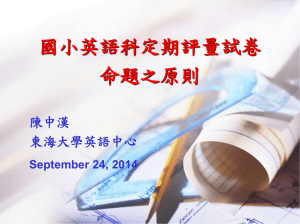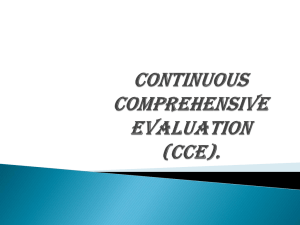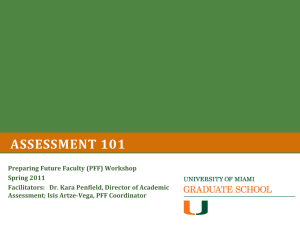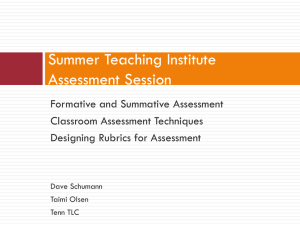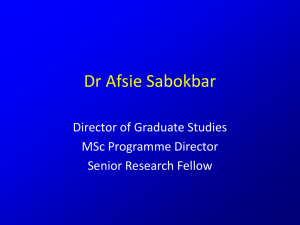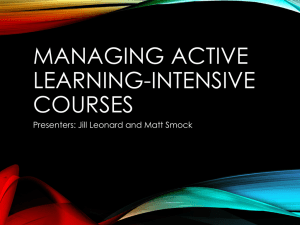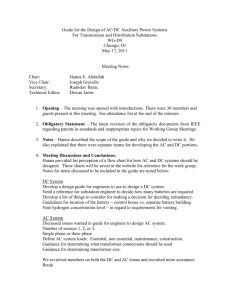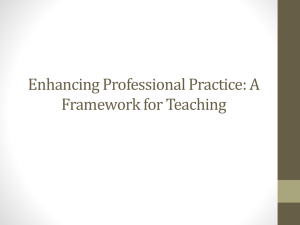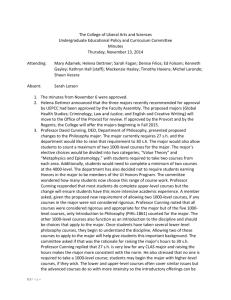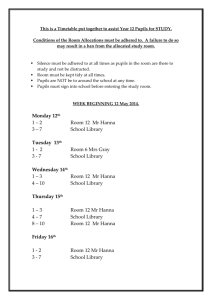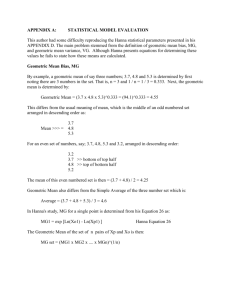File
advertisement
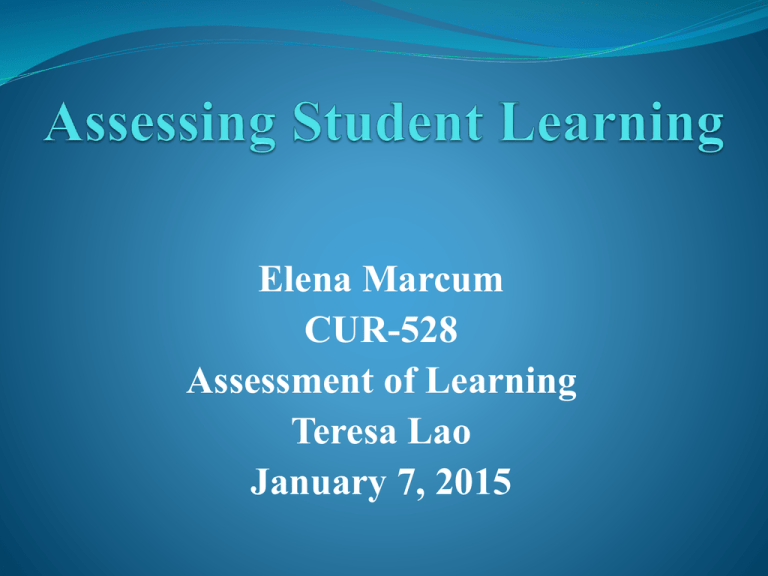
Elena Marcum CUR-528 Assessment of Learning Teresa Lao January 7, 2015 Assessment As an Professional Military Education (PME) instructor, I had a duty and responsibility to motivate, inspire and teach my students to become leaders in their respective Air Force careers. As an Air Force Junior Reserve Officer Training Course (AFJROTC) high school teacher, my responsibility was to motivate and inspire high school students to become respectable citizens. Either way, assessment played huge role in knowing if my students understood the impact they have and will have in the world. Overview Definition of Assessment 3 Types of Assessments Examples & Explanations Assessment: In education, the term assessment refers to the wide variety of methods that educators use to evaluate, measure, and document the academic readiness, learning progress, and skill acquisition of students from preschool through college and adulthood (The Glossary of Education Reform for Journalists, Parents, and Community Leaders, 2013) . Is collecting information about student learning, using what you know about the material and delivering the material to the students, and guiding discussions and asking question in order to know that students understand and comprehend the material given. Diagnostic Formative Summative (Hanna & Dettmer, 2004) Three different types of assessments Pre-tests These were used first day of class to indicate where our students stood with the material. It was a multiple choice test with scenarios and either 3 or 4 options to choose from. Formative tests After several days of teaching the material to the students, they used a case study to pick out the material that was discussed. A formative test was given, once I had results, I went over the answers with the students, I chose to pick a student who had the wrong answer to hear their rationale on why they chose that answer. Once given, another student would speak out and show them where they went wrong. I took notes of all this information and used it to improve myself as an instructor. I did this for every subsequent class, I learned something new from every class. Three different types of assessments Summative tests After all discussions during the formative test and postevaluations, the next day the students took their summative tests. The results proved that the students understood their mistakes, and applied what they learned during the formative test to the summative test. Diagnostic: Pre-tests, self-assessments, discussion board responses, and interviews (Hanna & Dettmer, 2004). Formative: When implementing a new activity in class, you can, through observation and/or surveying the students, determine whether or not the activity should be used again (or modified) (Hanna & Dettmer, 2004). Summative: Rubrics, often developed around a set of standards or expectations, can be used for summative assessment. Rubrics can be given to students before they begin working on a particular project so they know what is expected of them (precisely what they have to do) for each of the criteria (Hanna & Dettmer, 2004). Rubrics also can help you to be more objective when deriving a final, summative grade by following the same criteria students used to complete the project (Hanna & Dettmer, 2004). Conclusion Definition of Assessment 3 Types of Assessments Examples & Explanations Hanna, G. S., & Dettmer, P. A. (2004). Assessment for effective teaching: Using context-adaptive planning. Boston, MA: Pearson A&B. Just Science Now! (n.d.). Assessment-inquiry connection. http://www.justsciencenow.com/assessment/index.htm Suskie, L. (2009). Assessing Student Learning: A Common Sense Guide (2nd ed.). San Francisco, CA: Jossey-Bass.

